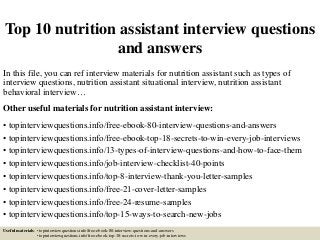
Healthy eating habits for children include vegetables and fruits. The majority of fruit and vegetable are good sources for protein, vitamin A, vitamin D, and B12 as well as iron. Some eggs even have omega-3 oils added to them, which helps improve the brain development of children. A cup of fruits contains approximately 12 calories. Many fruits are cut into small portions. You can serve fresh or dried fruit with peanut butter as a snack.
Juice should be served in moderation - one or two servings per day if you want to keep your child's sugar intake under control. A bowl of real fruits is better than juice. It will provide fiber and other healthy nutrients for their diet. Additionally, juice can cause them drink too much between meals. This could pose a danger to their health. You need sodium to maintain body fluids and nerve function. But too much sodium can increase your risk of developing heart disease or high blood pressure. Generally, processed foods contain high levels of sodium.

A new study found that 60% of food products sold to children were unhealthy. A survey of 156 products revealed that more than half had added sugar, 15.4% contained saturated fat, and seven percent contained salt. The researchers also investigated how companies label their healthier foods as well as what they contain. The study revealed that these foods were processed in a way that did not list the ingredients. These foods often did not contain the necessary vitamins and minerals children need to grow up strong and healthy.
Parents should be aware of the health risks associated with sugary and processed foods. Parents need to be aware of the health risks associated with sugary and processed foods. Avoid processed foods and focus on healthy foods. Instead, they should encourage them to eat foods rich with vitamins and minerals. It will help them form positive eating habits in future. There are many things you can do to encourage your child towards eating more fruits and veggies. You can help your child by setting an example by providing them with a healthy diet.
It is important to give children a varied diet, including fruits and veggies. Also, limit their intake of juice. Each meal should contain at most one serving of each. For children aged between one and 14 years, the recommended daily fruit-and-vegetable intake is one cup per day for a toddler and three cups per day for a teenager. Flaxseed and omega-3 fatty fish are great sources of fats. Many fruits and vegetables contain high levels of antioxidants and fiber.

Milk is a great source of vitamin D and calcium, which helps to build strong bones. It also contains approximately 8 grams protein. However, dairy products should only be given to children who are at least two years old. Children should not consume eight ounces or more of cow's dairy milk each day. When they turn 18, it is okay to switch to low-fat milk. While cheese and yogurt are not necessarily healthy, they are still great sources of calcium and vitamin D.
FAQ
What is a good gym routine for you?
Regular exercise is key to staying healthy. It doesn't make a difference what kind of activity you choose. As long as you do it often, it will be beneficial. Consistency is key. For you to get results, you have to stick with it for a longer period of time.
Begin with a small amount of daily exercise (like walking). You can gradually increase the amount of exercise you do until you have 30 minutes each day. This could include running, cycling, swimming, weight training, yoga, or aerobics classes.
You should try to ensure that you exercise most days of the week. Don't miss any sessions unless you have an excuse.
Make sure to wear appropriate clothing and footwear for outdoor exercise. It is important to take into account the weather conditions, and how they may affect your ability to exercise safely.
Make sure that you drink plenty of water while you're exercising. Avoid alcohol consumption during this time as it can lead to dehydration. Also, avoid caffeinated drinks such as coffee, tea, and cola. They will not only give you more energy but also dehydrate you.
It's common to feel tired after your first workout. If you stick with your training program, you'll feel more awake and alert.
How to Get Rid of Belly Fat Fast
There are many methods that can help you reduce your belly fat quickly. One way is to eat less food and drink plenty of water.
Another way is to increase your metabolism by participating in activities such as running and swimming.
If you want to remove belly fat quickly, you should also avoid sitting down for too long. Instead, stand up throughout the day. This will help to burn more calories.
If you have already tried all these methods but still struggle with belly fat, there is another option.
A belt is a device that allows you to do this. The belt fits around your waist and is tightened when you sit down.
You will feel more comfortable and be able to move around. This will make you lose more calories and help you reduce your belly fat.
What's a good workout plan for 7 days?
A seven-day exercise plan should include cardiovascular training (running/biking/swimming), strength exercises (using weight machines, free weights) and one flexibility/core program (yoga or Pilates). Each activity should be performed at least once each week. Each session should last no more than 45 minutes.
Cardiovascular Exercise: Running/Biking/Swimming
You should aim to get at least 60 mins of cardio exercise per week. To achieve the best results, aim to exercise for at least 75 minutes each week. Cardio exercises can be used to increase blood flow, stimulate muscle growth, and improve blood circulation.
Strength Training
Cardio exercises focus on the heart and lungs while strength training targets muscles and bones. Strength training helps you burn calories even while resting.
Flexibility & Core Workouts
Your whole body will be stronger if you have flexibility and core training. Both yoga or Pilates are great options.
Statistics
- According to the American Heart Association, blood pressure should be checked at least once every two years, beginning at age 20. (my.clevelandclinic.org)
- By John Thompson Take a whopping 38% off a set of PowerBlock Pros. (menshealth.com)
- An estimated calorie range for moderately active adult males falls between 2,200 to 2,800 calories per day, depending on age. (eatright.org)
- 10 pounds in a month is likely during a lean bulking phase, especially for beginners. (muscleandstrength.com)
- Candidates and applicants must pass all four tests at 70% (minimum level) to graduate from Basic Deputy U.S. Marshal (BDUSM) Training. (usmarshals.gov)
External Links
How To
What's the best food for men?
Men should eat five meals a day of fruits, vegetables and other healthy foods. They should avoid fast food and limit red meat.
Vitamins and antioxidants are abundant in vegetables and fruits, helping to prevent heart disease, cancer, and other diseases.
Vegetables include broccoli, cauliflower, carrots, spinach, tomatoes, peppers, cucumbers, lettuce, mushrooms, etc.
High in fiber and protein, beans and peas also have high levels of protein.
The best sources of omega-3 fat acids are nuts and seeds. Omega-3 fatty acid is essential for the brain and hormone production.
Another source of omega-3s are fish. More mercury is found in fish than any other meats. However, fish liver oil does contain fewer toxins.
It is necessary to have a healthy growth rate and develop your brain.
Poultry is a good source for lean protein. Chicken breast is one the healthiest meats.
Lean beef is low-in saturated fats as well as cholesterol. Red meat should be limited as too much iron can increase your chances of developing prostate cancer.
Avoid sausages and hot dogs. These meats can be carcinogenic because they contain nitrates.
It is obvious that exercise is important for overall health. But what if you're already working out regularly? What can you do to improve or maintain your physical condition?
The answer is yes You have many options to maximize your workouts. These are some ways to make your workouts more enjoyable.
Start slow. Do not push yourself too hard your first session. You could injure yourself. Begin at a pace you're comfortable with, and then gradually increase your intensity.
Before and after stretching. Stretching can help to loosen tight muscles, decrease soreness, improve flexibility, and reduce pain. Stretching can take place standing, sitting, or lying down.
Cool down. This is especially important when you are doing cardio exercises. To ensure that you don't become tired, your body needs to have time to recuperate between sessions. You can cool off by taking slow, deep breaths and walking.
Hydrate. Drinking plenty of fluids helps keep you hydrated and reduces muscle cramps. Water is the best choice, but you can also drink sports drinks.
You must eat right. Eat enough calories. It will keep you feeling energized and focused while you work out by eating regular meals throughout each day.
Get rest. If you get adequate sleep, your body will be energized and ready to go for your next workout. The best way to heal tissues is through sleep.